- Home
- Paul Christopher
Lost City of the Templars
Lost City of the Templars Read online
PRAISE FOR
RED TEMPLAR
“An action-packed, engrossing book … [Christopher’s] plots are so intricately woven that the reader is swept away. The tension level in his books is high and there is constant danger for the characters. This is not just a rehash of the Knights Templar legend. Mr. Christopher has constructed a conspiracy that reaches to the highest levels of governments and the financial power brokers. I highly recommend Red Templar and the series as a whole.”
—Fresh Fiction
Also by Paul Christopher
Michelangelo’s Notebook
The Lucifer Gospel
Rembrandt’s Ghost
The Aztec Heresy
The Sword of the Templars
The Templar Cross
The Templar Throne
The Templar Conspiracy
The Templar Legion
Red Templar
Valley of the Templars
Lost City of the Templars
Paul Christopher
SIGNET
Published by the Penguin Group
Penguin Group (USA) LLC, 375 Hudson Street,
New York, New York 10014
USA | Canada | UK | Ireland | Australia | New Zealand | India | South Africa | China
penguin.com
A Penguin Random House Company
First published by Signet, an imprint of New American Library,
a division of Penguin Group (USA) LLC
Copyright © Paul Christopher, 2013
Penguin supports copyright. Copyright fuels creativity, encourages diverse voices, promotes free speech, and creates a vibrant culture. Thank you for buying an authorized edition of this book and for complying with copyright laws by not reproducing, scanning, or distributing any part of it in any form without permission. You are supporting writers and allowing Penguin to continue to publish books for every reader.
REGISTERED TRADEMARK—MARCA REGISTRADA
ISBN 978-1-101-61185-2
PUBLISHER’S NOTE
This is a work of fiction. Names, characters, places, and incidents either are the product of the author’s imagination or are used fictitiously, and any resemblance to actual persons, living or dead, business establishments, events, or locales is entirely coincidental.
Contents
Also by Paul Christopher
Title page
Copyright page
Dedication
Epigraph
PROLOGUE
Chapter 1
Chapter 2
Chapter 3
Chapter 4
Chapter 5
Chapter 6
Chapter 7
Chapter 8
Chapter 9
Chapter 10
Chapter 11
Chapter 12
Chapter 13
Chapter 14
Chapter 15
Chapter 16
Chapter 17
Chapter 18
Chapter 19
Chapter 20
Chapter 21
Chapter 22
Chapter 23
Chapter 24
Chapter 25
Chapter 26
Chapter 27
Chapter 28
Excerpt from The Templar Conspiracy
Excerpt from The Templar Legion
This one is for
my grandson,
Gabriel,
in hopes that he will enjoy
Sherlock Holmes and Professor Challenger
as much as I did.
When you have eliminated the impossible, whatever remains, however improbable, must be the truth.
—Sherlock Holmes
Things are only impossible until they’re not.
—Jean-Luc Picard, Star Trek: The Next Generation
Into what dangers would you lead me, Cassius,
That you would have me seek into myself
For that which is not in me?
—William Shakespeare, Julius Caesar, Act I, Scene I
PROLOGUE
Montevideo, Uruguay
Mouth of the Río de la Plata
August 26, 1928
Even now, after almost three years in the jungle, the young man retained his chiseled, almost movie star good looks—Douglas Fairbanks on a very bad night perhaps, or on a very good morning after. Tall, dark and handsome, his freshly shaven cheeks showing the paler skin where there had lately been a beard. But there were lines on his face that had not been there three years ago when the expedition began, and there was a hardness and a cruelty in the set of his square jaw and the bitter light in his jade-colored eyes.
He’d arrived in Montevideo penniless and exhausted. The penniless part had been dealt with easily enough by selling a dozen of the gold coins to a bullion dealer on the Punta del Este. The old dealer asked no questions about why a young bearded man with the stink of the jungle on him and the yellowish cast of malaria in his face would be selling thirteenth-century coins from Genoa, Italy. The dealer simply handed over a thick wad of pale purple five-hundred-peso banknotes to the young man and bade him a fast farewell before he changed his mind.
The exhausted part would be taken care of on the three-week-long passage home. The young man had slept in a seaman’s hotel in the warehouse district close to the docks the night before and had arrived at the terminal just after dawn. The huge bulk of the Royal Mail Steam Packet ship Almanzora loomed over him in the morning mist off the steaming river like a dream, her single orange funnel and her long black hull the cradle that would take him home.
When the purser blew his whistle, he was the first man up the gangway, the newly purchased leather case with the even newer suits of clothing light as a feather in his hand, the heavy metal footlocker with its hidden treasures even lighter on his shoulders.
He had paid for a first-class cabin on the promenade deck, well forward of the funnel to keep the soot off his clothes. The cabin was more than ample for his needs. The walls were paneled in patterned fruitwood, the deck was covered with patterned wall-to-wall carpeting and there was a wide bed with sideboards to prevent accidents if the ship rolled or pitched too much in the night. There was a dressing table, a built-in cupboard, a couch, several chairs for guests and most important of all an adjoining private, tiled bathroom with a large ceramic tub, a sink and a large mirror.
The young man set the suitcase on the floor and heaved the footlocker up onto the bed. Fishing out the leather thong that hung around his neck and slipping it over his head, the young man used the single key on the thong to open the box. He threw back the lid and examined the contents, removing them, one by one. First came the string-bound bundle of twenty-three of the russet-colored Pierce’s Memorandum and Accounts notebooks that the colonel favored. To one side was the foot-long bamboo tube that still contained at least a hundred of the remaining one-ounce gold pieces, stopped from rattling by the plug of a bloodstained rag. Jack’s blood.
He lifted out the bamboo tube and the bundle of notebooks, putting them to one side. Beneath them was a large leather bag made from a capybara, the hog-sized rodent that lived its life foraging in the rain forests of Brazil. The bag was easily the size of a bulging fist. The young man lifted the bag out of the footlocker and set it on his knees. He loosened the leather ties that kept the bag shut and reached in an open hand.
The young man pulled out a fistful of emeralds, sapphires and a single-faceted diamond as big as a robin’s egg. A fortune in his hand, and hundreds more like them still in the bag. Enough to last a man several lifetimes, every day of those lifetimes haunted by the toll the gemstones had taken on his soul. He dropped the stones back into the sack, tightened the thong and tied it off, then set the bag aside on the bed with the other
items.
At the very bottom of the footlocker was the greatest treasure of all: a box, hand-carved from the wood of a jacaranda and set with a silver clasp. The box was a little more than a foot and a half wide and two feet long, just barely fitting into the bottom of the footlocker. He lifted the box out of the footlocker and laid it gently across his knees. In the corridor outside his cabin door, he heard a steward calling out the “All ashore that’s going ashore” in English, Portuguese and Spanish.
A few moments later the ship gave a single blast of its ship’s whistle and the young man faintly heard the sound of the gangway rattling back into the Almanzora’s great black hull. The vibration of the engines far below his feet turned to a deeper note, and he was vaguely aware that they were moving. He was on his way home now and finally he was safe.
He undid the clasp and pushed back the lid of the box. The sight of its contents was still enough to make him draw in his breath. Inside, carefully dried in sawdust for several weeks, was the head, thorax and abdomen of what had lately been a living creature pinned to the felt bottom of the box. Neatly set alongside it were the twenty-two-inch silvery wings that had once set the magnificent insect to flight. It was, without a doubt, a perfect specimen of a Meganeuropsis permiana, a giant, flesh-eating dragonfly that had been extinct for the last two hundred and fifty million years.
1
If you were looking for a word to describe Peggy Blackstock’s mood as she walked down the Strand in the seaside English town of Torquay, “boring” would spring to your lips, immediately followed by “If I see one more Ye Olde English Pub advertising the best fish and chips in Torquay, I’m going to hurl.”
She’d been in town for two days, and there were still three more to go until Rafi’s World Archaeology Congress convention was over. She was already at her wits’ end. Being in Torquay was like being in Coney Island without Nathan’s, the Cyclone or the bumper cars. There were just as many people, but the sand on the few beaches was muddy and dirty, the English Channel water was freezing cold and most of the food tasted like library paste.
It wasn’t that she wasn’t interested in her husband’s work; in fact, she was more than interested—she was fascinated. Rafi specialized in the archaeology of the Crusades in Israel, and it took them both to dozens of sites from Jerusalem and Jaffa to Turkey and Turin, from Bosnia to Berlin and just about everywhere else in Europe. The Crusades had covered a lot of ground from the tenth century to the fourteenth and had reached as far as Sweden in their scope.
On her far-flung trips with Rafi, Peggy had become an accomplished archaeological photographer, and she landed more than enough freelance assignments, contributing pictures to the New York Times Travel Magazine, Bon Appétit, National Geographic and half a dozen other periodicals.
But something was missing, and Peggy knew exactly what it was: she craved the adrenaline rush of the truly unknown. Since coming back from Africa and losing track of her cousin Doc, she’d missed the … excitement and adventure that seemed to follow the ex–U.S. Army Ranger. It had been like that even when she was a girl.
It was Doc who’d taught her not to be afraid of heights and had calmly and efficiently taught her the skills of rock climbing in the Adirondacks. It was Doc who’d also taught her to hunt and fish and use a gun.
It was their uncle Henry the professor who’d given Peggy her first camera and taught her how to use it, but it was Doc who’d given her the courage to reach the places where she’d taken the first photographs that really mattered to her—the summit of Mt. Skylight, fourth highest mountain in the Adirondacks, at sunset, a lone gray wolf in the winter at Yellowstone and a hibernating twelve-hundred-pound Kodiak bear in Alaska. It was Doc who’d started her on a lifelong quest for adventure, and somehow she knew the quest wasn’t over yet.
One thing was sure: no one was going to find the adventure of a lifetime on the main street of Torquay, so at the next corner she turned left, away from the sea, and began climbing a narrow residential street of low attached bungalow-style dwellings that climbed up a seriously steep hill. It was not the most likely path to any kind of adventure at all, but the kids in the Narnia books found it through a cupboard door and Harry Potter found it on Platform 9 at King’s Cross Station, so you never really knew, then, did you? Anyway, the exercise would do her good; she’d had one too many orders of Ye Olde fish and chips in the last few days.
There were a few shops on her way up the street; the English version of a 7-Eleven, with ads for fruity-flavored vodka coolers in the window. There was a hairstylist called British Hairways where the customers under their dryers looked as though they were all in their eighties, and a prosthetics store called Lend You a Hand with a single bright pink artificial leg in an otherwise empty window. She’d probably find the Bates Motel around the next bend.
What she did find was Weatherby and Sons Auction House, a ragtag assembly of a plastered bungalow attached to something at the rear that might have been a two-story carriage house turned into a commercial garage and a third stumpy-looking building with a pair of firmly closed barn-sized doors.
Between the stumpy building and the garage lay a paved driveway that seemed to be doubling as a parking lot. At the end of the drive was an overhead aluminum door, slid three-quarters open. The roll-up door had a sign over it that read AUCTION TODAY. The car in the parking lot was a Jaguar XKR convertible—this year’s model. The auction business was doing well by somebody. Peggy turned down the drive and ducked under the aluminum door.
The interior of the auction house was like the biggest, most chaotic yard sale in the world. Rowboats sat in the rafters, chandeliers and harpoons hanging from the beams, a stack of twisted narwhal tusks in one corner along with an equal number of ancient-looking bamboo fly rods and an enormous stuffed Scottish stag with a rack of eighteen-point antlers. The stag looked dusty, the glass eyes cloudy. Probably not a lot of buyers for stuffed giant Scottish stags in these days of fiscal responsibility. There was a stage at the front of the hall and perhaps a hundred or so folding chairs in front of it, most of them filled with people waving numbered paddles around as they bid on one item after another. Easels were set up on the stage to display works of art. There was a movable display wall full of hanging musical instruments and several tables with smaller and medium-sized objects to be sold. The auctioneer stood at a podium in the center of the stage and a crew of workers, male and female, carted things on and off the raised platform. An old man with grizzled stubble and thin hair slicked back with something that looked like Vaseline handed her a paddle and said, “There you go, dearie. Have fun,” and pointed her to an empty seat at the end of an aisle halfway to the auction stage. She took her seat and noticed that the number on her paddle was 666, not a particularly auspicious number for someone who’d shivered her way through all five of the Omen movies.
The items went by quickly—six Regency chairs for twenty-two hundred pounds, the lot, a Georgian silver porringer for a thousand, a Royal Winton Circus jug for three hundred and sixty pounds … The list went on and on. Throughout every lot that went up, Peggy noticed that the paddle in the lap of the man beside her never twitched. He was in his fifties, with the high cheekbones and deep-set, dark eyes of a Russian or a Slav. His hair was too long—well over the nape of his neck, but his salt-and-pepper beard was perfectly groomed and the suit looked very expensive. The man’s hands were strong, well manicured, but with the raw knuckles and the calluses of someone who spent a lot of time outdoors. He certainly didn’t give the impression of someone who’d be interested in silver porridge pots. After fifteen minutes he made a frustrated grunting sound, stood up and left.
The next lot was a hodgepodge of household effects from a man named Raleigh Miller, who, according to the auctioneer, had lived to the ripe old age of a hundred ten in a room at the back of the Hole in the Wall Pub on Park Lane for as long as anyone could remember. He came down to the pub each evening for a bottle of Samuel Smith’s Imperial Stout and an order of fish
and chips, both of which he took back to his room.
The room must have been sparsely furnished because there weren’t too many household goods being offered and even fewer being auctioned. The final lot was a small steel footlocker, padlocked and rusted shut with a faded first-class travel sticker that said R.M.S.P. ALMANZOR. The apparent journey the box had taken was from Montevideo, Uruguay, to Southampton, arriving on August 26, 1928. Peggy did the math. If Miller had been a hundred and ten years old when he died, that meant he’d been born in 1903. He’d been just twenty-five years old when he departed on the R.M.S.P. Almanzora. What was a twenty-five-year-old British kid doing in Uruguay, and where did he get the money for a first-class cabin? Interesting questions. The first price from the podium was two pounds. Peggy held up her paddle. No one else bid. Once, twice, thrice and it was hers. She went down to the stage, paid her two pounds, filled out the appropriate paperwork and was given her prize. It weighed a ton, and Peggy asked if they could call her a taxi; walking back to the convention center would be an impossibility. Not only did they call her a cab, but they put the box on a little hand truck and called one of the younger assistants to haul it out to the curb for her.
“You know anything about this old guy, Miller?” Peggy asked as they went up the main aisle.
“He was a bit of a loon, I know—least that’s what my uncle told me.”
“Your uncle?”
“Bert. He’s one of the barmen at the Hole in the Wall.”
“Why did your uncle Bert think he was crazy?”
“He was forever getting newspapers, not proper English ones but foreign—the El Observadorio or something. And A Vozey da Serra, sounded like.”

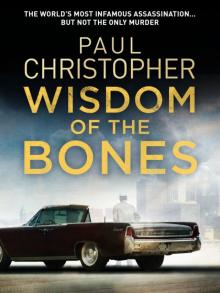 Wisdom of the Bones
Wisdom of the Bones The House of Special Purpose
The House of Special Purpose The Second Assassin
The Second Assassin Michelangelo's Notebook
Michelangelo's Notebook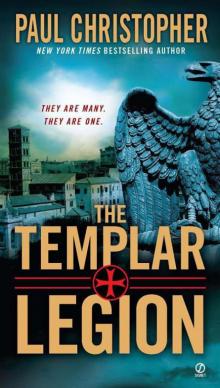 Templar Legion
Templar Legion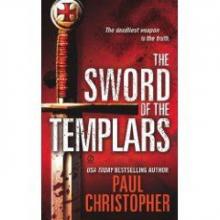 The Sword of the Templars t-1
The Sword of the Templars t-1 Red Templar
Red Templar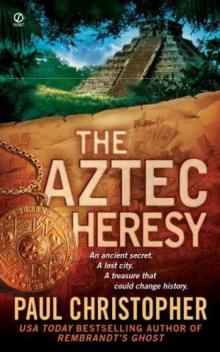 The Aztec Heresy
The Aztec Heresy The Templar Legion
The Templar Legion Rembrandt's Ghost
Rembrandt's Ghost Sword of the Templars
Sword of the Templars The Templar throne t-3
The Templar throne t-3 The Templar Conspiracy
The Templar Conspiracy The Templar Cross t-2
The Templar Cross t-2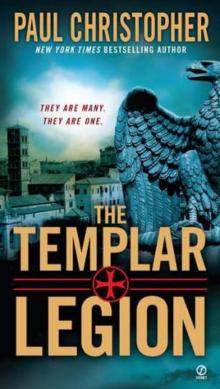 The Templar Legion t-5
The Templar Legion t-5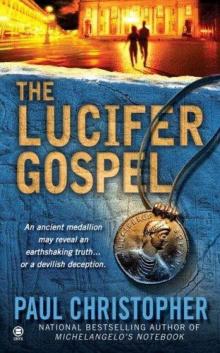 The Lucifer Gospel
The Lucifer Gospel Templar Throne
Templar Throne Michelangelo_s Notebook fr-1
Michelangelo_s Notebook fr-1 The Lucifer Gospel fr-2
The Lucifer Gospel fr-2 Valley of the Templars ts-7
Valley of the Templars ts-7 Valley of the Templars
Valley of the Templars Templar Cross
Templar Cross The Templar Throne
The Templar Throne The Templar Cross
The Templar Cross Lost City of the Templars
Lost City of the Templars The Templar conspiracy t-4
The Templar conspiracy t-4 Templar Conspiracy
Templar Conspiracy